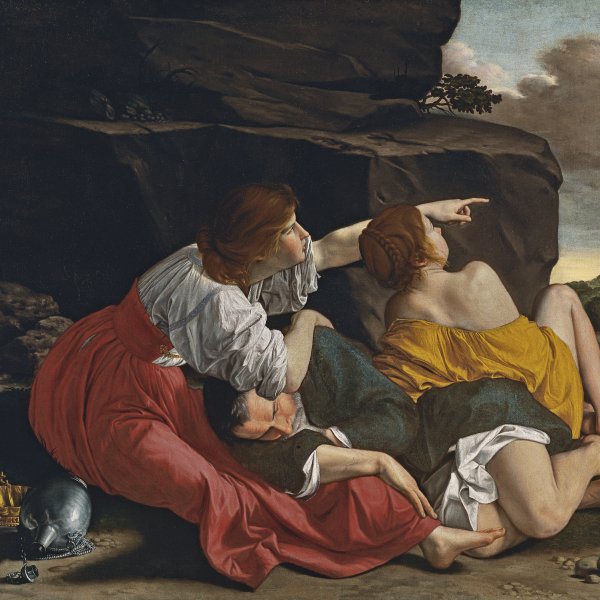Orazio Gentileschi (workshop of)
Orazio Gentileschi was born into a family of artists in Pisa. His father, Giovambattista Lomi, was a goldsmith and his brother Aurelio a painter. Around 1576 Orazio Gentileschi moved to Rome to look after his maternal uncle, from whom he took the surname Gentileschi. During the early years of his career, at the end of the century, Gentileschi collaborated on some of the major decorative schemes in Rome under Sixtus V, such as the Biblioteca Sixtina in Santa Maria Maggiore, and the one in San Giovanni in Laterano.
From 1605 the artist’s work starts to reveal the new ideas of Caravaggio and he moved away from his early Mannerist style. Gentileschi’s style at this period combines the marked influence of Caravaggio’s realism with clear echoes of Adam Elsheimer’s landscape painting. The first two decades of the century were his most productive years and works from this period include David and Goliath (Gemäldegalerie, Berlin), David killing Goliath (National Gallery, Dublin), Judith with her Servant (Wadsworth Atheneum, Hartford), and Saint Francis receives the Stigmata (San Silvestro in Capite, Rome). Gentileschi continued to be involved in major decorative schemes, and between 1611 and 1612 formed a team with the painter Agostino Tassi, collaborating on the frescoes in the Casino delle Muse for Cardinal Scipione, and those in the Sala del Consistorio in the Quirinale palace. This successful partnership broke up after Gentileschi accused Tassi of raping his daughter, the painter Artemisia Gentileschi, who was training with her father at this period.
Gentileschi moved to Genoa around 1622 where he worked for the Duke of Savoy. Two years later he went to Paris on the invitation of Marie de’Medici. He spent the last years of his life in London where he became court painter to Charles I in 1626. During this period Gentileschi painted numerous versions of themes that he had developed in the past including Lot and his Daughters and The Rest on the Flight into Egypt. In London his most important project was for the frescoes in the Main Hall of the Queen’s House in Greenwich, painted with the assistance of his daughter Artemisia.




